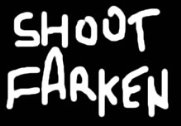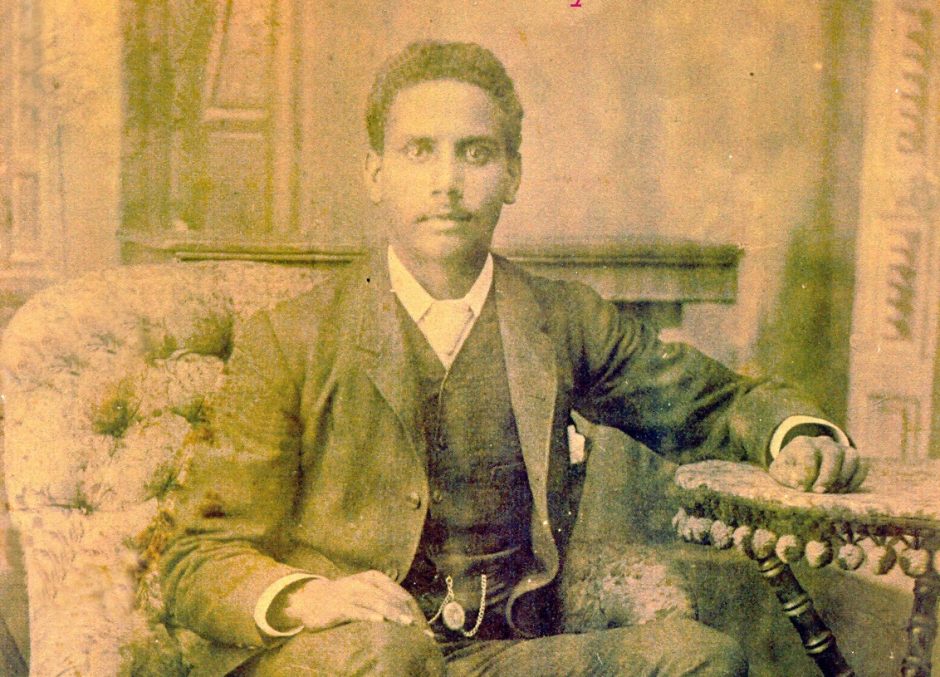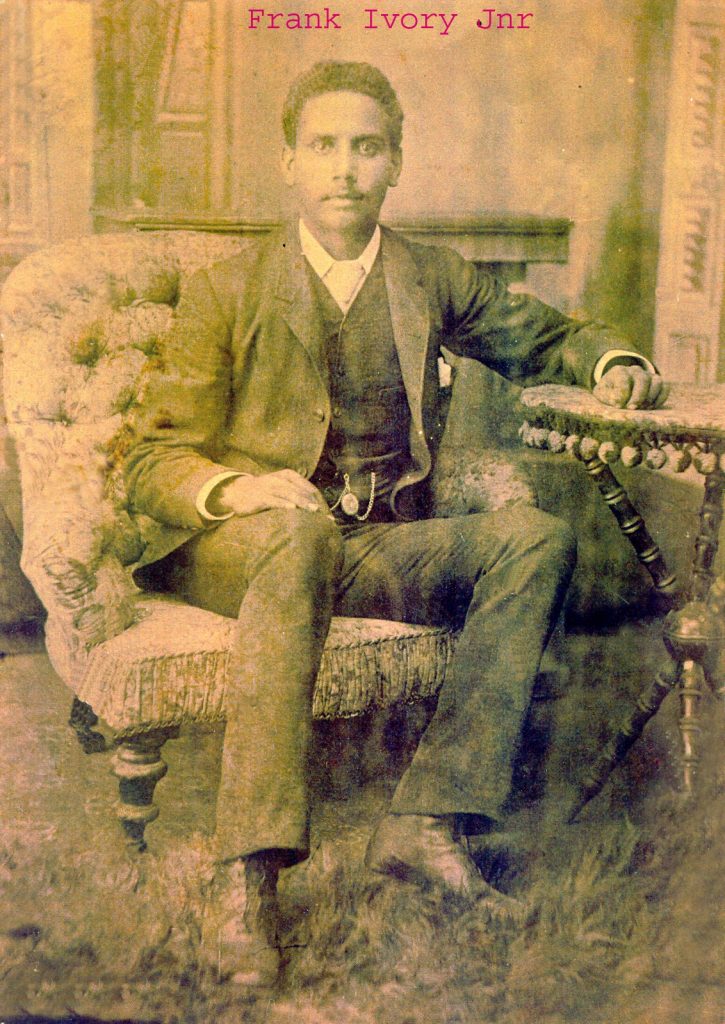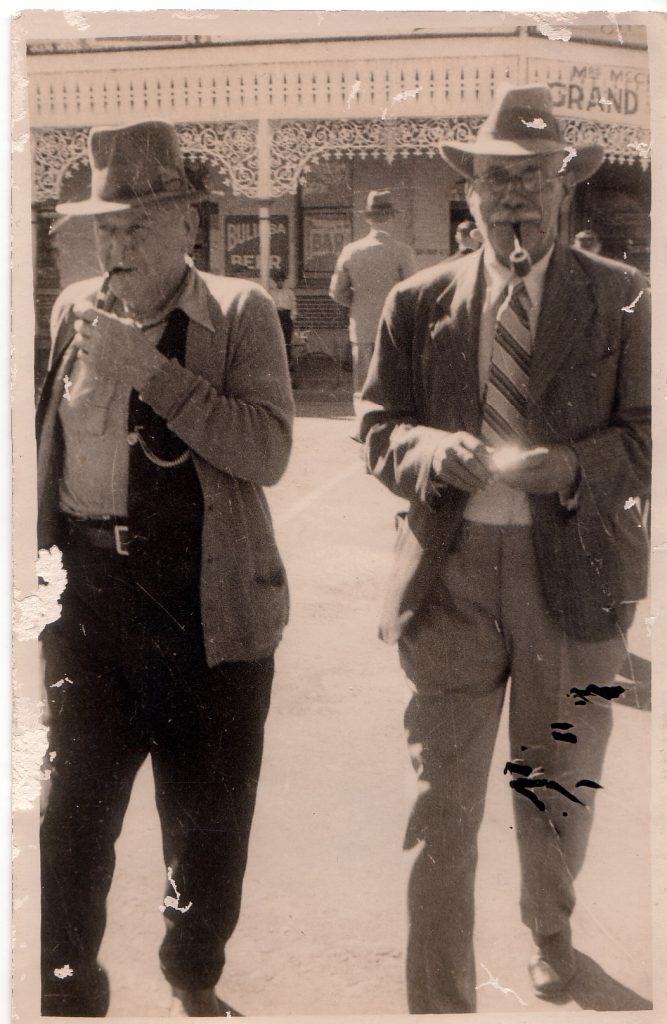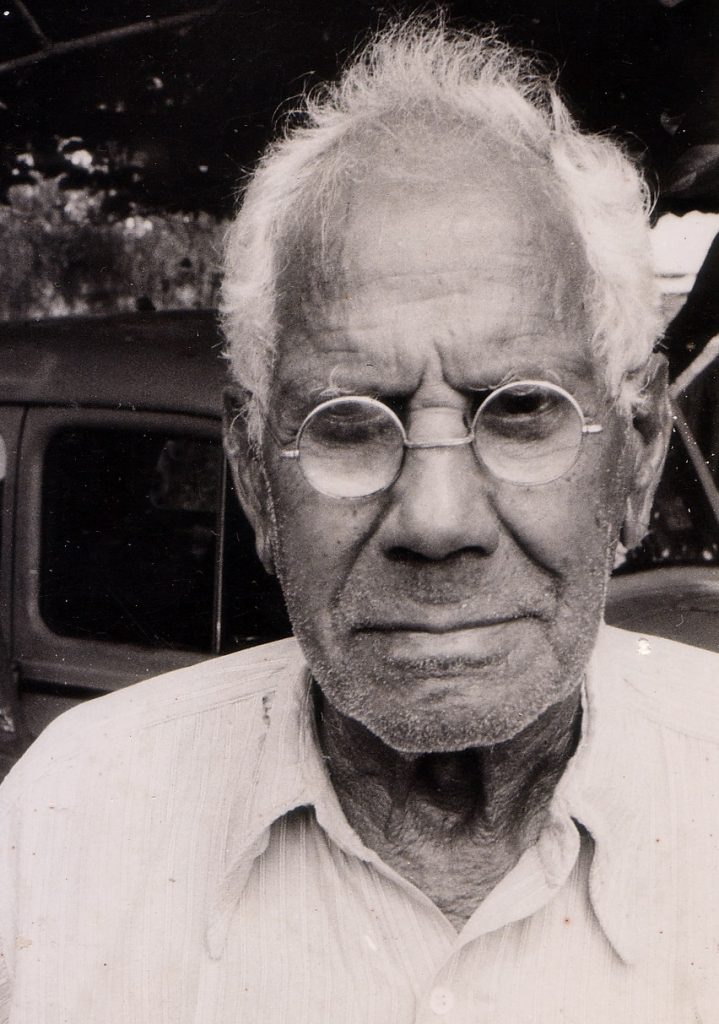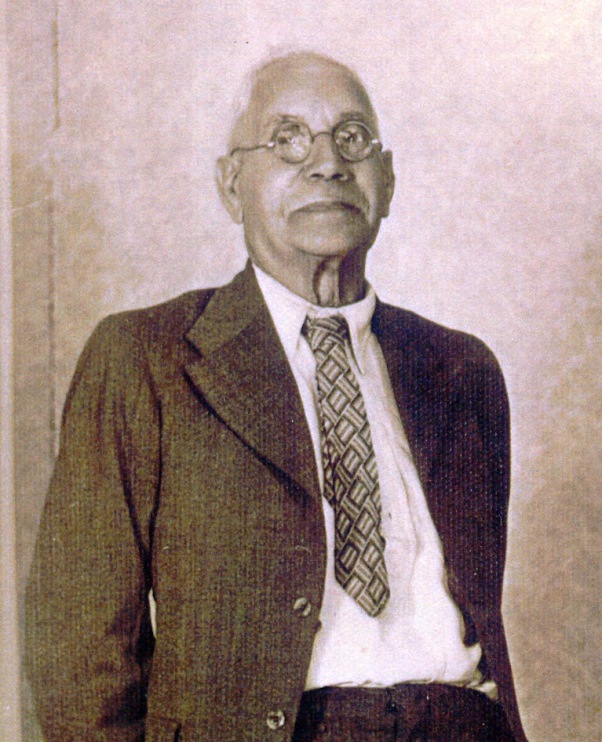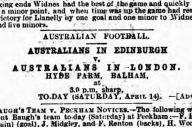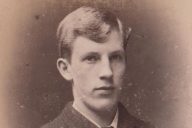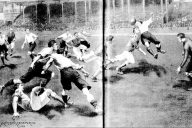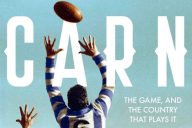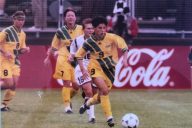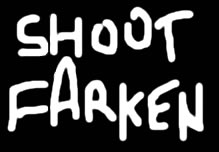Remembering the Maryborough marvel, Frank Ivory: The extraordinary life and times of the first Indigenous star of two football codes
Maryborough Railway Station, 30 August 1893
He stood on the platform, a suitcase in his hand and a dream in his head.
Of course he’d been here before. And every test he had passed without a blemish. Everyone but the selector knew what he was capable of. Yet each time he’d been disappointed.
This time, surely, it was different. Queensland had been demolished by New Zealand and New South Wales. They needed new blood. And what’s more, they needed him. The metal bars at the Maryborough Gymnasium were rusted red with his sweat. He was strong and fit and would tackle a bull if one dared cross his path. He was ready.
The guard blew the whistle. Amid the steam and smoke from the engine, passengers scurried aboard. In those last moments before departure he must have considered the possibility that this was his last chance.
All aboard for Brisbane!
There was no point in worrying. He would do what he always did. Leave everything out there on the field. Squaring his shoulders, Frank Ivory boarded the train.
Two cultures
The Mary River flows northwards from its headwaters in the Sunshine Coast hinterland to the sea some 300km away near Fraser Island. White settlers named it for a lovesick governor’s dead wife. To the Indigenous Kabi Kabi people it was mooraboocoola.
Giant Bunya Pines growing in the Mary’s upper reaches produced football sized cones that yielded edible nuts. At harvest time Indigenous people from miles around would gather at Bunya festivals to feast and celebrate.
At Gympie, the Mary offered up its bounty in the form of alluvial gold. The discovery of gold and the resultant rush of white settlers changed the area forever.
Further downstream lies the town of Maryborough. If you had looked out at the river from a vantage point in the town’s Botanic Gardens in the late 1880s, you might have been lucky to witness a skiff rowed by students from the Maryborough Boys Grammar School. There’s a good chance that one of the crew was an athletically built, dark-skinned boy named Frank Ivory.
To fully understand Frank’s past, you need to go back to when two adventure-seeking brothers from Scotland first set foot in Australia.
The brothers, Francis and Alec Ivory, arrived in Sydney in the 1850s. They were certainly well-heeled adventurers – their father, James Ivory, was one of the most senior judges in Scotland. The brothers wasted no time in heading north to work on their older brother’s property at Eskdale, west of Brisbane. They soon bought their own land – the Eidsvold station on the Burnett River. Keen sportsmen, the Ivory brothers cleared land near the homestead for a golf course and were among the first people to play golf in Australia.
Francis was well respected in the district and in 1873 was elected to Queensland’s parliament as the Member for Burnett. He had three children with Caroline, a Goreng Goreng woman working at Eidsvold. Their second child, Frank, was born in 1871.
Young Frank grew up with an affinity for horses and cattle and was imbued with his father’s love of sport. When he was sent to school 200km away in Maryborough, his mother was said to have been heartbroken. Later, she left Eidsvold so her youngest son Billy would not be lost to her.
After a stint in the central school, Frank was enrolled in Maryborough Boys Grammar School in 1887. He was popular with the other children and the friendships he made, such as with a boy named Bernard Corser, would last a lifetime.
At school, Frank displayed his sporting prowess. Whether it be rowing, running, cricket or gymnastics, Frank excelled at any athletic contest. In his last two years of school he won the silver cup for best all round athlete. But of all the sports he took up, the one that came most naturally to him and gave him the greatest pleasure, was football.
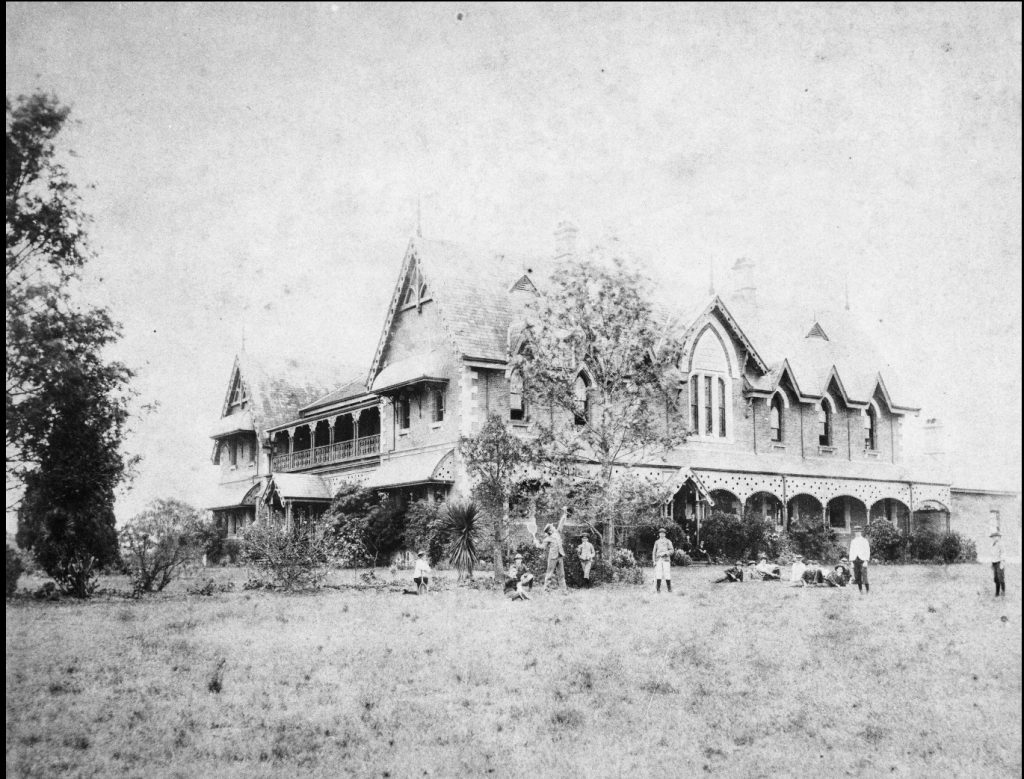
The code they were playing at Maryborough in the 1880s was Australian Rules football. Frank joined the Victoria club while still at school. Known as the Vics, they played regular contests with Maryborough’s other football club, the Emus.
In June 1888, Frank’s play was acknowledged in the press. In a game against the Emus: ‘Some of the Victorias deserve special mention, particularly Frank Ivory, whose play was fine indeed.’
This mention in the local newspaper, the Maryborough Chronicle, Wide Bay and Burnett Advertiser (hereafter The Chronicle) would be the first of many over subsequent years. The Chronicle would become one of Frank’s biggest supporters.
Later that year Frank represented Maryborough in a match against Ipswich at the Maryborough Showgrounds.
The sky was dark and threatening rain when the match began. Maryborough were outclassed early on but in the second half staged a fightback. The Chronicle told its readers: ‘A hot scrimmage ensued in front of the Ipswich goal, Frank Ivory sneaking the ball out and kicking the prettiest goal of the day.’
Maryborough had left their run too late and lost 4 goals to 3. But Frank had stamped himself as a top class footballer.
In September 1889, a Maryborough team travelled south to play matches in Ipswich and Brisbane. Frank was conspicuous in both games. Against Ipswich The Queenslander reported: ‘Their most brilliant man is Ivory, whose grand runs and good all-round play elicited rounds of applause from the spectators.’
At the banquet after the Ipswich game, the field umpire gave his opinion of Frank’s abilities: ‘He alluded to the splendid play of Frank Ivory, and said that, in his opinion, he was the best all-round player in Queensland.’
The football season of 1889 ended with an experimental match played at Maryborough’s Exhibition Ground under electric lights. The game was a success, drawing a crowd of more than 500 people, yet hardly anyone could see what was going on. The light operators did their best to improve things by tilting the reflectors towards the ball.
Frank, now working as an apprentice with a saddlery in Maryborough, was set for another big football season in 1890.
His good form was rewarded with selection for Queensland in a match against the powerhouse Victorian club, South Melbourne. The match was one-sided, South Melbourne winning by a big margin. Frank didn’t let his team down, The Brisbane Courier noting, ‘Ivory rendered excellent service to his side.’
The thrashing at the hands of South Melbourne was a blow to the sport of Australian Rules in Queensland. In all the major centres, rugby surged ahead while Australian Rules withered.
As Maryborough was an Australian Rules town, locals were frustrated to see a Sydney rugby team pass through unchallenged on their way to play in Rockhampton. When a Brisbane Australian Rules team failed to turn up for a late season match in Maryborough, it was the last straw.
A meeting was held in April 1891 to decide whether Maryborough would stick with Australian Rules or switch to rugby. It was a close-run thing. Young Frank Ivory, although a naturally shy speaker, delivered a strong argument in favour of rugby. It was enough to win the day and overnight the Vics and Emus became rugby clubs. Frank was given a set of rules to study. He was to report back and teach Maryborough’s footballers the finer points of the game. Frank’s rugby career had begun.
Rugby prodigy
Frank was elected captain of the Vics for season 1891. He was also on the committee, a team selector and an occasional referee. Joining him on the committee was his old school mate, Bernard Corser.
After a few scratch games to learn the rules, the first rugby season in Maryborough began with a match between the Vics and the Emus. Frank played fullback, and with his pace and long kicking skills soon proved to be a natural at the game. In one match against the Emus, Frank scored all the Vics’ points in a 14-0 win. The Chronicle noted that ‘The way Ivory and his back men worked the ball and passed from one to another was first-class.’
In July, Frank captained a Maryborough representative team that played two matches in Brisbane. Despite being trounced by their opponents, Frank was singled out for praise. Against the Christian Brothers club The Brisbane Courier said, ‘Ivory put in some very beautiful punts and was the mainstay of his side.’
Christian Brothers paid a return visit to Maryborough. The first match was drawn but Maryborough won the second game. Under Frank’s captaincy the standard of local football had improved considerably.
By 1892 Frank had moved to the centres where his speed and kicking game were even more effective.
Footballers in Maryborough would have devoured newspaper reports about the intercolonial matches between New South Wales and Queensland. In front of big crowds at the Sydney Cricket Ground, Queensland won both matches against the odds. It seemed a world away from the humble club football games being played on Maryborough’s Lennox Street Reserve next to the railway.
But a chance for Maryborough’s footballers to test themselves came about just as the season was drawing to a close. Brisbane sent a representative team to the town to play two matches.
Frank was appointed Maryborough’s captain and one of the selectors. In the weeks leading up to the big games, townsfolk spoke of little else.
In the first game Maryborough surprised everyone by hanging on for a 3-3 draw. The following day, with the Oddfellows Band belting out tunes from the grandstand, Brisbane won a hard fought game 7-0.
In the two seasons since it had switched to rugby, Maryborough had improved to the extent that they could hold their own against teams from Brisbane.
Frank Ivory, the premier footballer in Maryborough, had plenty to think about in the summer of 1892/93. He’d tested himself against quality opposition and performed with credit. He too would have read the reports of the intercolonial matches and perhaps indulged himself the dream that he could play in one these games. But Queensland teams were invariably picked from Brisbane sides, and Indigenous players were never chosen. Still, Frank could dream. If he had been looking to the sky for portents for the coming season, he couldn’t help but notice storm clouds building up out to sea.
Flood
Tropical Cyclone Bundinyong made landfall in February 1893. Rain teemed down for days. The creeks of the Mary catchment such as the Walli, Obi Obi, and the Yabba, overflowed and a torrent of water raced downstream. At Gympie the river was running 20 metres above the normal level and the mines and houses were flooded.
The road bridge into Maryborough was swept away on a Saturday evening. One by one the businesses in the town went under water, including the offices of The Chronicle. In the suburb of Granville Flat every house bar one was washed away. The dredge used for keeping the river navigable became an ark, sheltering 50 families with nowhere else to go. Only treetops and the top stories of buildings could be seen. To one observer the river was ‘an angry ocean,’ and next day boats plied the streets distributing provisions to people trapped in upper stories.
Multiple floods hit South East Queensland in February 1893 and the period became known as Black February.
Eventually the waters receded and people began to clear up and attempt to get back to their normal lives. Frank was on the committee of the gymnasium where one of his first tasks was to help repair flood damage.
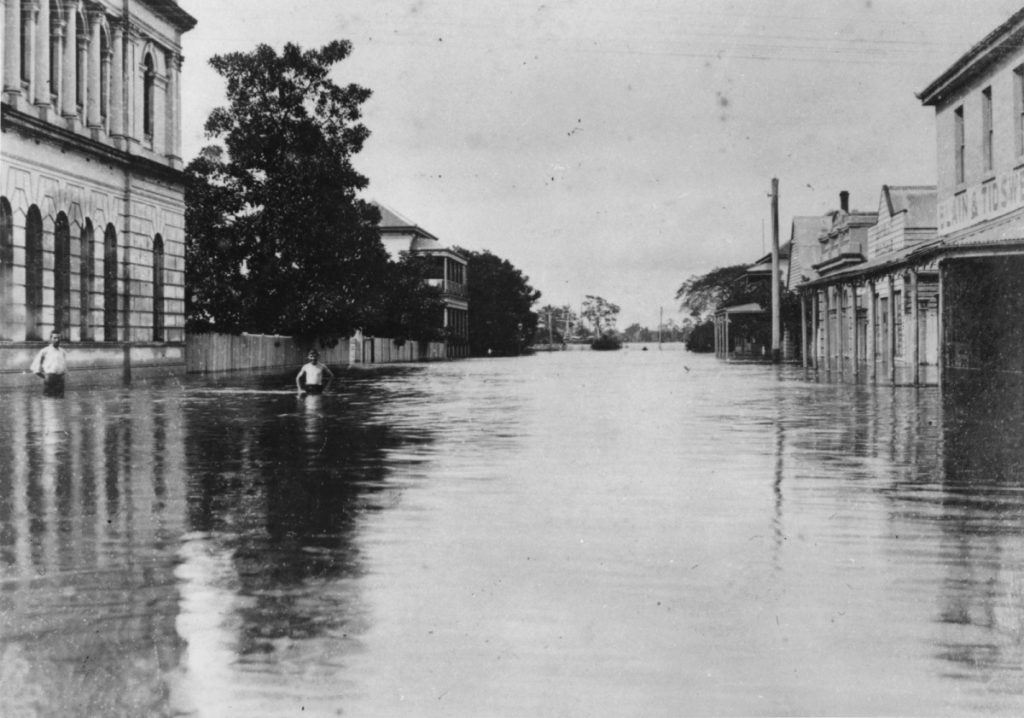
Trials
For Maryborough’s footballers, getting back to normal meant preparing for a new season, and Frank in his new role as secretary of the Victoria club, wasted no time in penning a letter to the rugby union in Rockhampton requesting a visit.
The letter was quoted in The Morning Bulletin, a Rockhampton newspaper, and is one of the few times we hear Frank’s own words: ‘With regards to expenses, I would like to know if you can defray them, and I am sure that later on in the season our boys will only be too glad to return the same compliment to you, and give you a good old time.’
Despite Frank’s efforts, representative matches against other towns and a possible game against the touring New Zealanders fell through. It seemed Maryborough’s footballers would be denied the chance of proving themselves against top class opposition in 1893. Then a note came through from the Queensland union requesting Maryborough send two players down to Brisbane for trials. The offer wasn’t too magnanimous – the players would have to cough up their own train fares and were urged ‘to stay with friends.’
The two players chosen were Frank Ivory of the Vics, and Harry St. Ledger of the Rovers. Suitcases in hand, Frank and Harry waited at Maryborough station on a Friday morning. The two young friends had plenty of time to talk about football, and life, as the trip to Brisbane took nearly eight hours.
The next day Frank played for the ‘plains’ and Harry for the ‘stripes.’ Harry was nervous, and without bars on the soles of his boots, struggled to keep his feet. Frank however, had a brilliant game.
The pair returned to Maryborough the following Tuesday afternoon, with an anxious wait ahead. The news came through a few days later: Harry missed the cut but Frank gained selection for a second Queensland 18 against New Zealand.
The game was held at Brisbane’s Exhibition ground on Wednesday 18 July 1893. Frank played fullback for the first half before switching to his preferred position of centre in the second. Although on a beaten team, Frank played well.
The Chronicle’s correspondent was certain Frank would be picked for the senior Queensland team to play New Zealand on the Saturday: ‘I would put in Ivory as centre three-quarter for his pace, tackling and kicking, together with a cool head are unequalled by any other candidate for the position.’
When Frank wasn’t selected The Chronicle was ropable: ‘Ivory is undoubtedly the one who should take his place, and should Queensland be beaten again, the defeat will be attributed to this.’ The correspondent might have felt vindicated when Queensland was thumped 35-0. There were still two intercolonial matches against New South Wales to be played in August. Frank would have to set his sights on those.
Queensland’s sole selector, Fred Lea, again overlooked Frank for the first match against New South Wales, preferring the experienced Fred Warbick at fullback. The correspondent ‘3/4 Back’ in the Darling Downs Gazzette wrote: ‘Much surprise is expressed at the inclusion of Fred Warbick, who has only played on two occasions this season. With a man like Ivory at his call Mr Lea has no excuse whatever for “resurrecting” a fullback.’
Meanwhile Frank had travelled with the Vics to Bundaberg. They played the locals as part of the Bundaberg Show, the match taking place under electric lights. There were puddles on the field and the lights sometimes dipped to almost darkness but the match pulled in a good crowd. When the Vics returned home to Maryborough a wire was waiting for Frank advising him to pack his bags. The selectors were giving him another trial. On the 30 August 1893, Frank arrived at Maryborough station waiting for the mail train to Brisbane.
Queensland lost the first match against New South Wales 14-6. With three losses from three intercolonial matches Queensland desperately needed to make changes for the final game. With selector Lea watching on, Frank put in a virtuoso defensive performance in the trial, his tackling and punting saving his side countless times. The celebrations in Maryborough were long and loud when it was announced that Frank had been selected to play for Queensland against New South Wales.
Not a vestige of funk
The weather in Brisbane on Frank’s Queensland debut on 2 September 1893 was fine with a stiff breeze blowing. The surface of the Exhibition Ground was in good condition although a little slippery underfoot. The expectant crowd of 5,000 were silenced early when New South Wales ran in two quick tries to post a 6-0 lead. Frank soon made his presence felt, making a number of damaging runs, including one from his own 25 to the New South Wales 25. Queensland’s backs began to sizzle. By halftime they had turned the match around and were leading 8-6.
The second half was a seesaw battle that had the crowd enraptured. Toward the end of the game New South Wales pressed the Queensland line but ‘owing to the splendid tackling and the effective manner in which Austin and Ivory stopped the rushes the New South Wales men were unable to score’. Queensland won 11-6 and Sydney’s Evening News commented: ‘Great cheering took place, Ivory and W. Warbick being especially singled out for their exertions.’
Frank had made an impression on Queensland and New South Wales critics alike. Brisbane’s The Telegraph said: ‘Ivory covered himself with honour, and proved himself an ideal centre three-quarter. He looked after his wing men in a manner that deserved a better reward, and his gameness for tackling big men shows that he has not a vestige of funk.’ Sydney’s Referee said, ‘F. Ivory established his reputation as a first-class three-quarter, and his performance was characterised by a fine judgement of distance and effective tackling.’
When the Sydney papers commented on Frank, they mentioned his colour, the terms ‘darkie’ and ‘half-caste from Maryborough’ being used. This was something completely absent from Queensland press reports.
After Frank returned to Maryborough the town hosted a team from Rockhampton. As the steamer pulled into the wharf, the gathered footballers and citizens gave the Rockhampton players three rousing cheers that were returned by the players on board. The visitors were shown all the sights of the district including the Horticultural Society’s show where they were ‘struck with the display of the exhibits, especially the pansies and roses.’
Maryborough won the first match 14-5. Frank’s two tries were scored ‘amid the frantic cheering of the spectators.’
The second match drew a big crowd to the Showgrounds. With the Oddfellows Band in fine form in the grandstand, Frank scored a brilliant individual try to an enormous ovation. ‘I-VO! I-VO!’ the crowd chanted whenever Frank got the ball. At full-time the crowd burst onto the field and picked Frank up, hoisting him on their shoulders. The shy Indigenous lad from Eidsvold was the toast of the town.
A Rockhampton paper, The Morning Bulletin published a letter by one the local team’s players. Speaking about Frank he said: ‘As a football favourite I have never seen his equal. Whether he did ill or well – he generally did well – the crowd cheered; and when he got a try they simply went wild with delight.’
The Chronicle tells an anecdote of a mother urging her reluctant son to go to Sunday school. Digging in his heels the boy said, ‘I don’t want to go to Heaven. I want to join a football club next winter, and learn to be a crack three-quarter back like Ivory or St. Leger.’
Frank’s sporting achievements didn’t end in winter. He represented Maryborough in cricket, and in athletics performed well in several meetings in the district. In a thrilling 440-yard race at Gympie, Frank and another Indigenous athlete B. Lake, were running neck and neck down the home straight to wild cheering. When Frank finished in first place the crowd’s loud cheers proved ‘Frank’s popularity extends far beyond Maryborough’s regions.’
Hallowed turf
When the 1894 football season rolled around Frank was in great nick. This year the reward awaiting Queensland selection was a tour of New South Wales.
After injuring his ankle in an early season game in Rockhampton, Frank recovered in time to play in a Brisbane club match. A bigger crowd than usual attended the fixture, no doubt as The Chronicle told its readers, ‘on account of Frank Ivory playing with the City club.’
Frank was duly selected for Queensland’s tour of New South Wales. Sydney newspapers explained that ‘Frank Ivory, of the Queensland fullbacks, is a half-caste native of the Wide Bay district. He was educated at the Maryborough Grammar school, and is a very gentlemanly fellow.’
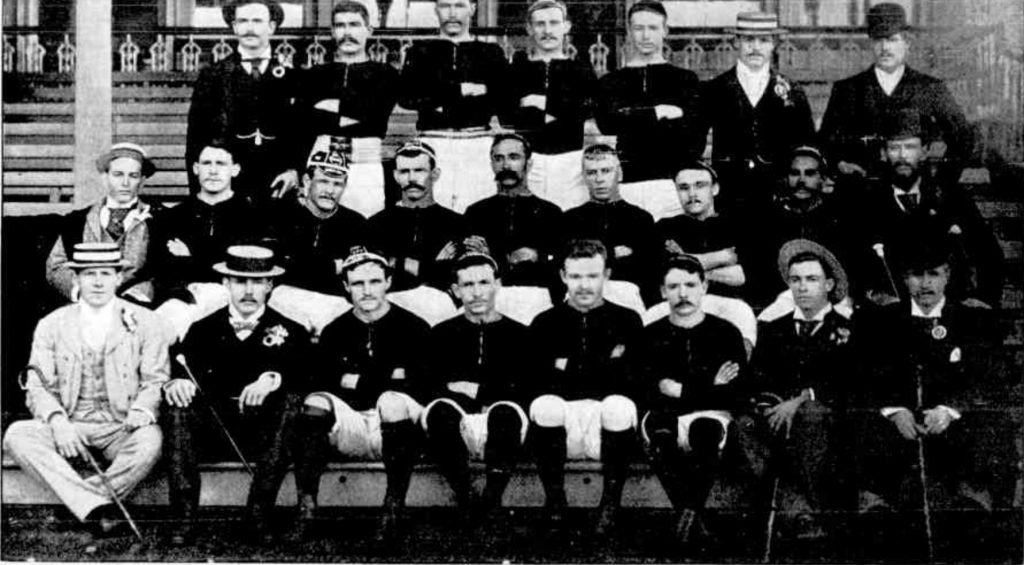
The Queensland team left Brisbane by train on Wednesday 18 July 1894. They ran out for their first tour match a day later against Northern Districts in Newcastle. It was an auspicious day in Queensland sport – the first time a Queensland team had worn maroon jerseys. Frank played in the centres and sported ‘swagger white boots’. Queensland won the game 11-3. Sydney sports fans couldn’t wait for the big matches ahead.
The first intercolonial match was played on the hallowed turf of the Sydney Cricket Ground on 21 July 1894 before the biggest crowd Frank had seen in his life. At least 15,000 spectators turned out, many remarking on the smartness of the maroon and blue jerseys of the teams. The blues were on the attack early and took a 4-0 lead thanks to a well taken field goal by Colquhoun. At half-time New South Wales led 4-3 after Holmes had scored a try for the maroons.
Queensland threw everything at New South Wales in the second half, the backs in particular stretching the blues defence. Frank was having a fine game, The Australian Star saying: ‘Ivory’s play was really good, his kicking being fine. Ivory also showed he could collar by going low at the lengthy Hanna as he came sweeping along for the Queensland line.’ Despite the pressure from Queensland, the second half was scoreless and New South Wales triumphed 4-3.
In mid-week the Queenslanders took the train to Bathurst. As they came over the mountains the players crowded the windows to get a glimpse of something most had never seen before – snow.
Despite the cold, the maroons won the match against a regional selection 11-3. Frank switched to fullback at half time and played another good game. When a local player broke the line and looked certain to score, ‘Ivory putting in a splendid run outpaced him, and tackling beautifully sent him into touch.’
A record crowd for a football match in Sydney was on hand for the second intercolonial match at the Sydney Cricket Ground on 28 July 1894. The Governor of New South Wales was among the 20,000 spectators who watched the blues dominate early play, running in five tries to lead 15-3 just after halftime.
Undaunted, Queensland fought back, a drop goal and a converted try bringing the scores to 15-12. At the scoring of the second try Frank celebrated by doing a somersault and now the crowd were on the edge of their seats. But New South Wales rallied to record a 20-12 win, the spectators having got their money’s worth.
Two days after the intercolonial game, Queensland played a metropolitan junior selection in Sydney. Sections of the crowd behaved poorly, Frank being the main target of their jibes, which almost certainly included racial abuse. The Referee reported, ‘Every decent-minded man and sportsman must have been sorry to hear the rude, and, at times, ribald remarks made on Monday by some barracks for the Juniors, at the expense of the visiting team from Queensland, especially marked in the case of F. Ivory.’
The barrackers got some of their own back when ‘a well-known Randwick forward gave them a bit of his mind.’
Frank’s play in the intercolonial series was roundly praised. Sydney’s Truth said ‘he’s about the best back we’ve seen here since the Maoriland visitors. He collars, runs, kicks, or picks up equally well.’ The Sydney Morning Herald said that Frank ‘played a sound game at full-back, his quick returns and good tackling helping his side very much.’
New South Wales were due to tour New Zealand at the end of the season. Some of the Sydney press advocated including Queensland players to turn it into an Australian tour. With the generally agreed superiority of Queensland’s backs, there was every chance Frank could have been selected. In the end, a solely New South Wales team was chosen and it would be another five years before a team representing Australia took the field.
In the summer Frank was in top form on the cricket field. He represented Maryborough against Rockhampton, and broke the district record with a score of 126 in a club game.
The leaving of Maryborough
Away from the sporting field, Frank struck out in business on his own in April 1895. The Chronicle announced, ‘Mr Frank Ivory, our champion footballer, a leading cricketer, and all-round athlete, has started business on his own account as a saddler, and has set himself up snugly in the shop next to Mr. A. Cheyne’s, Kent Street, where his friends will no doubt be glad to see him prosper.’
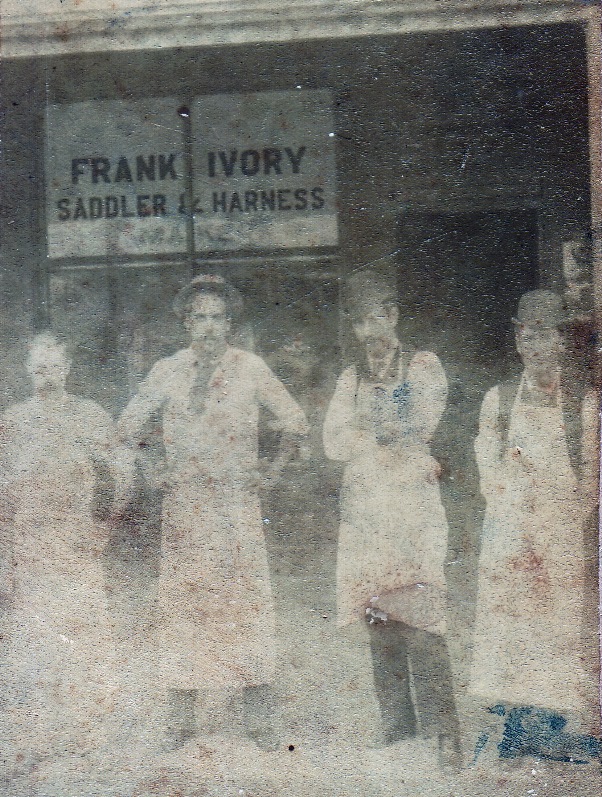
Playing rugby for the Vics, Frank was even having trouble with the barracking element in his home town. Their ‘thoughtless and unmanly conduct’ was derided by The Chronicle. When Frank was knocked out in one game, the barrackers jeered him, their ‘brutal taste, an outrage on the true sporting spirit.’
For once Frank even turned down an opportunity to play a game; a Rockhampton team travelling down to Sydney had invited him to play for them. Business was pressing and Frank could not afford to take a few weeks off work.
Frank was selected to play for Queensland in the first intercolonial match of the 1895 season against New South Wales in Brisbane. Unfortunately a knee injury forced him out of the team. The Chronicle noted: ‘It was a great pity Ivory was unable to take his place at full, for he is a great favourite with the Brisbane public.’
Frank missed both intercolonial contests in 1895 due to injury. He took out his frustrations by training Maryborough’s footballers in the gymnasium. Frank finally took the field in the last match of the season, scoring a try in a 6-0 win in Bundaberg. This time he was not so shy – speaking on behalf of the team at the after-match function.
The year 1896 got off to a bad start when Frank’s father died in January, necessitating a trip to Brisbane for the funeral. On the football front, all was in turmoil. Frank’s old club, the Vics, disbanded due to falling player numbers and he switched to the Turkeys club where he was installed as captain. The demise of the Vics foreshadowed a fall in the standard of rugby in Maryborough. This was confirmed when a Brisbane club side thrashed the locals 43-3. Even Frank wasn’t immune to the form slump, The Chronicle describing him as ‘very much off colour.’
Despite being out of form Frank was handed a lifeline when he was invited to Brisbane for yet another trial. This time, the prize for selection was a spot on Queensland’s first tour of New Zealand. In an attempt to regain form Frank spent his nights training at the gymnasium. Then for the umpteenth time, he made his way to Maryborough station and caught the mail train to Brisbane.
Frank’s team won the selection trial 46-0. Despite scoring two tries, reactions were mixed. ‘Ivory played wing three-quarter, but he has lost a lot of his dash’ said The Brisbane Courier. The Worker said ‘Apart from scoring two tries on Saturday, Ivory, the Maryborough crack, didn’t do anything uncommon. Something better will be expected of him before he can reasonably be selected as a Queensland representative.’
The Chronicle was confident though: ‘The exact team is not yet known, but this will probably be an open secret on Saturday evening. My congratulations both to Ivory and the Maryborough Union.’ Frank must have been considering what to pack for the six week tour.
But the call up never came. It was a bitter blow.
Perhaps unsurprisingly, Frank failed to turn up for the next club match. This time even The Chronicle turned on him: ‘he showed great lack of enthusiasm in deserting his club in the final struggle.’ His Turkeys team mates were furious. In a specially convened meeting Frank was expelled from the club. His glory days of rugby were over.
Although his form may have been down there were other things playing on his mind. The business was not going well. The 1890s was a time of economic hardship and many businesses, Frank’s included, had problems making ends meet. Around the time the Queensland side to tour New Zealand was announced, an apprentice sued Frank for unpaid wages. Frank was given two months to pay. When he couldn’t come up with the money he was sent to prison.
Within a few weeks, Frank was declared insolvent and released from prison. It was time for a new start and it wouldn’t be in Maryborough. Frank knew horses well and he secured employment as a stockman in Mount Morgan. Some of his friends got together and collected a significant sum of 25 sovereigns which they presented to him at the Queen’s Hotel. On the evening of 10 October 1896, Frank boarded the steamer Konoowarra bound for Rockhampton and a new life. With his friends waving from the wharf the ship pulled out into the Mary River. Frank waved back and watched the lights of Maryborough fade into the distance. It would be 25 years before he returned.
Daddy of them all
Life soon changed for the worse for Indigenous Queenslanders. The Aboriginals Protection and Restriction of the Sale of Opium Act 1897, severely curtailed the freedoms of Indigenous people. One of the chief outcomes of the Act was that people with one European parent, “half-castes” in the terminology, could not associate with other Indigenous people. It meant that extended families were cut off from each other. The Act gave a government official – the Protector of Aborigines – power over people’s free movement, labour and custody of children. To avoid these restrictions, Indigenous people with one European parent could apply for a document known as an exemption certificate, mockingly referred to as a dog licence by their recipients.
Frank, who lived among the white community, was able to move around freely. Despite this, he finally felt compelled to apply for an exemption certificate in 1924 when he was in his fifties. He was required to answer questions on his sobriety, whether he ‘associated with aboriginals’, and if he ‘understood the value of money’. His application was accepted and Frank was granted the exemption certificate. This hero of Queensland sport would have been required to carry the certificate with him at all times and produce it on demand.
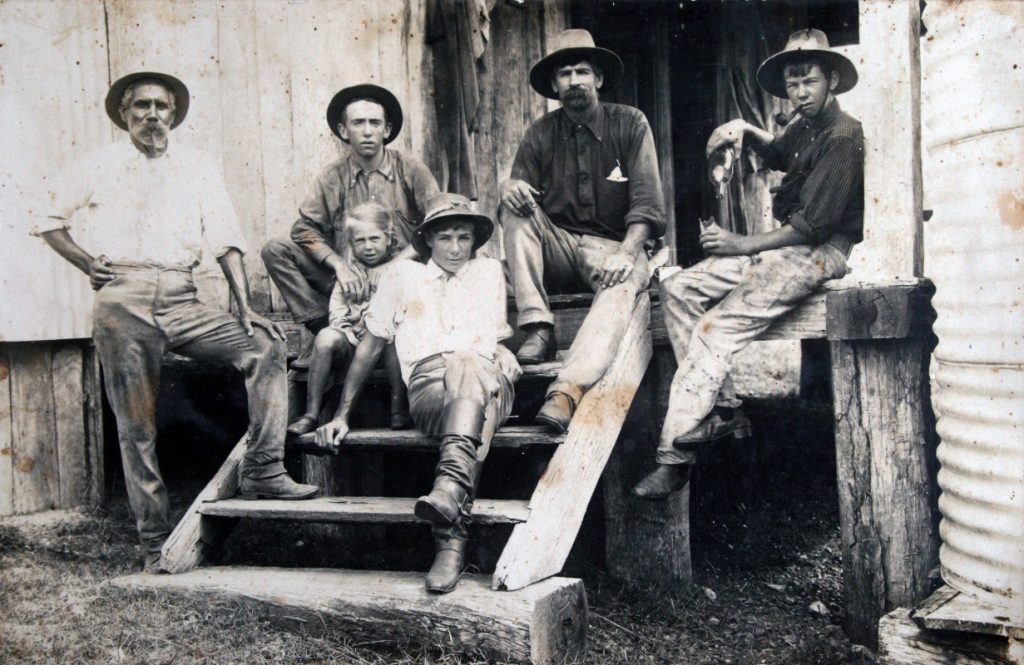
After leaving Maryborough in 1896 Frank didn’t waste time getting back into sport. He was active in athletics and cricket in Rockhampton. On the occasions he played rugby for Mount Morgan or Rockhampton he was an automatic choice as captain. Frank moved to Mount Perry where he worked as a stockman for the Province family on Rosslyn station, a place where he was to spend the rest of his life. He continued to play football and cricket into his late thirties. As he got older his rugby form was described as anything from ‘back to his best’ to having ‘lost his dash.’
Frank’s sporting fame was not completely forgotten. A girl from Brisbane visiting Mount Perry in the 1920s came back with Frank’s signature and the following rhyme in her autograph book:
Yonder flows the Burnett River,
Which hath made many a brave heart quiver;
But not the undaunted Frank,
Who oft has swum her from bank to bank.
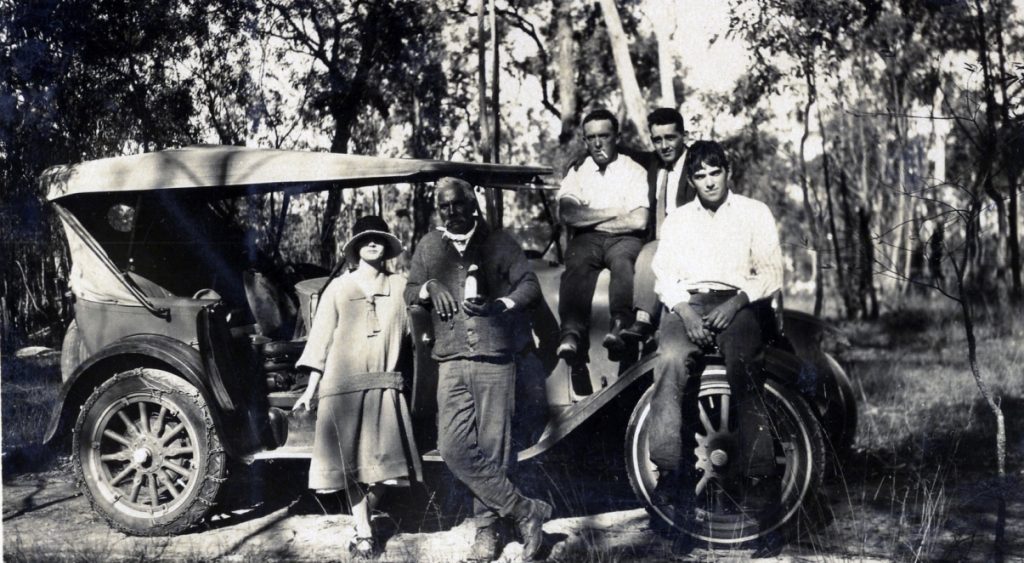
When Frank returned to Maryborough for a visit in 1922 a sportsman’s function was organised with Frank as the honoured guest. His feats at cricket, rowing, athletics, swimming and boxing were celebrated. But it was the football days that people remembered the most. People had fond memories of Frank captaining the Vics against the Emus on the reserve near the railway to the accompaniment of the Oddfellows band. Of all the great footballers who had played in Maryborough, The Chronicle reported that ‘Frank, in the popular verdict of club mates and opponents alike, was the “daddy” of them all.’
A toast was proposed to ‘Our Guest, Frank Ivory.’
As Frank rose to respond, thunderous applause broke out all around the room. Frank had to wait for the applause to die down to compose himself. As usual, he was humble in his speech, thanking his hosts courteously.
The occasion moved the well known local poet Cec Lowther (writing under the name ‘Bannerman’) to pen a poem for the The Chronicle:
Tho’ far away you’ve wandered,
We know your thoughts went back
To where the flowing Mary
Pursues its winding track.
Then, here’s good luck, old Ivo,
May years but bring you fame.
We raise our hats, old champion,
To one who “played the game.”
* * *
In 1941, Bernard Corser, member of Queensland’s House of Representatives, attended a function in Mount Morgan. He had been schooled at Maryborough Grammar, and played football with the Vics. He was introduced to an old but sprightly-looking Indigenous man, come down from one of the cattle stations. Even after fifty years, Corser recognised him immediately. How could he forget? The man he was vigorously shaking hands with was none other than Frank Ivory, the Maryborough marvel.
Connections
In 2006, two adventure-seeking cousins, Allan and Bob Godbold, loaded up Allan’s white Holden Statesman with provisions and hit the back roads of the Wide Bay-Burnett region of Queensland.
The cousins had only recently reconnected after many years, through their shared passion for family history. Allan had a particular blind spot in his family tree he wished to illuminate, that of his Indigenous ancestry. It was something he hadn’t known about when growing up. The more Allan discovered, the more connected he felt. Always a good sketcher and painter, he soon unearthed a gift for creating aboriginal art.
The surname that Allan was searching for was Ivory. It was the name shared by his grandmother Jessica and his great uncles, Frank and Billy.
Allan and Bob toured through Maryborough, Mundubbera, Biloela, Eidsvold and Cracow Creek searching for traces. At Theodore cemetery they came across the commemorative plaque for Billy Ivory. At Gayndah they paid their respects to Jessica.
They were also able to fill in some more details of Frank’s later years. He was much loved by the Province family at Rosslyn Station. A painted portrait of Frank hung in the living room of the homestead (it was still there when a magazine visited new owners in the 1990s). The family would serve Frank his lunch punctually at 12:00pm so he could return to his small cottage in time for the Blue Hills radio serial on the ABC.
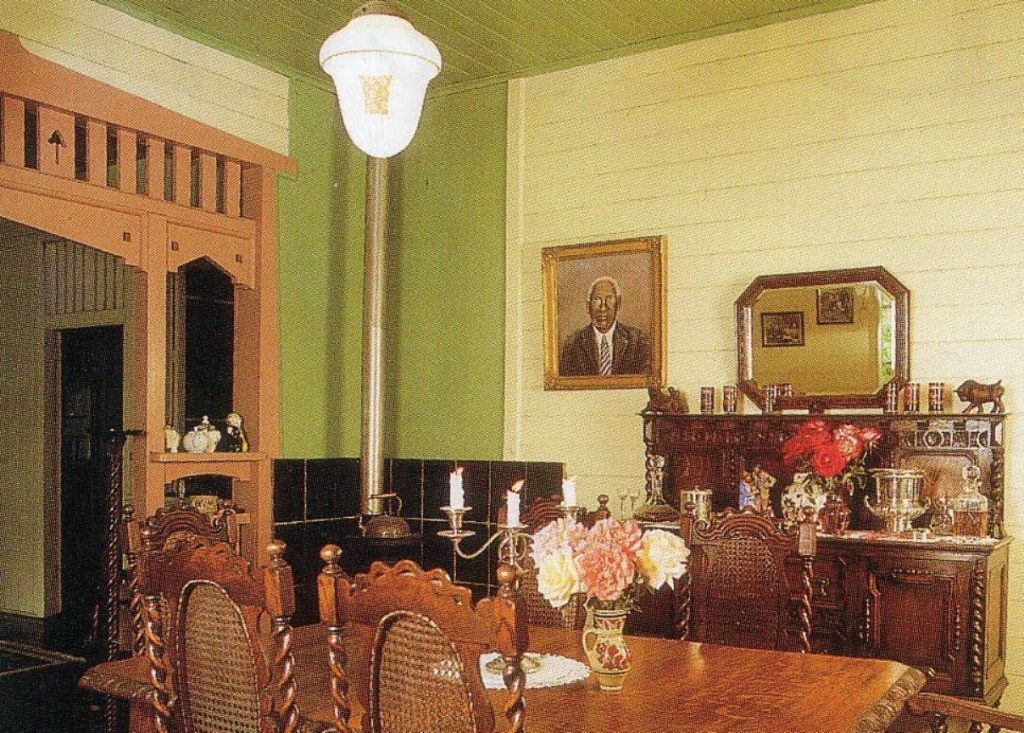
Allan and Bob met Charles Pollock, whose father was a friend of Frank’s when he was living at Rosslyn station. Charles told the story of his father and Frank having a drink at the Mount Perry pub one day. One of the patrons was giving Frank a hard time and Frank stood up to sort the man out. Charles’ father talked Frank out of it, insisting it was not worth the trouble. As Frank sat back down, he shook his head and said, “such are the vicissitudes of life.”
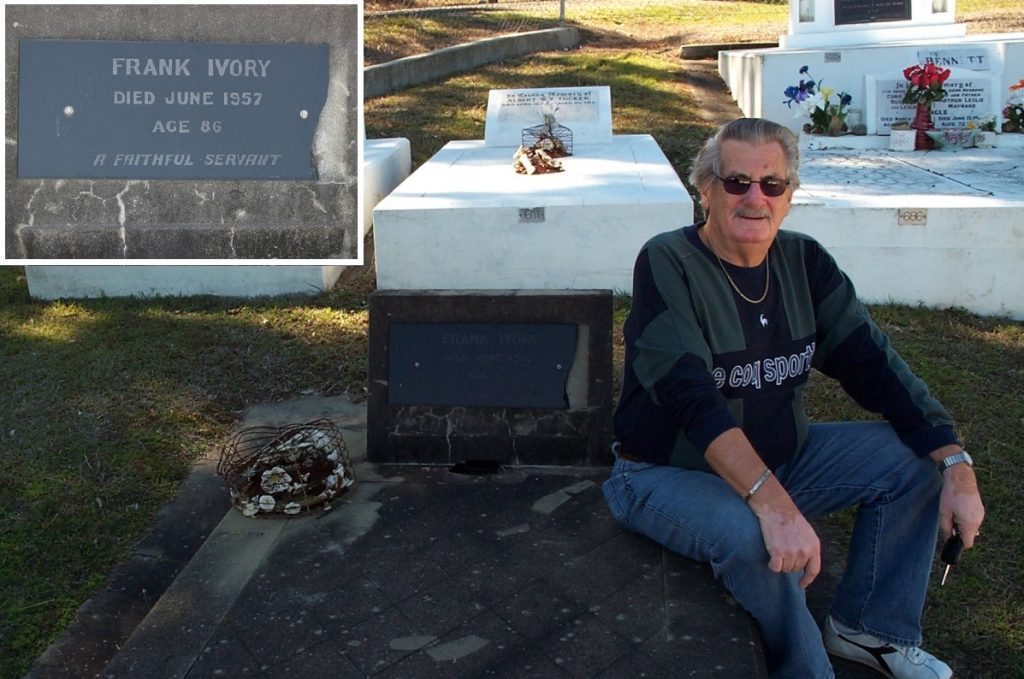
At Mount Perry cemetery, Allan and Bob visited Frank’s grave. There was a substantial headstone, likely paid for by the Pollock family. The inscription ‘A Faithful Servant’ didn’t sit too well with Allan. Perhaps it is a little underwhelming for a man who squared up to the mighty South Melbourne club as a nineteen year-old and once put in a superlative defensive performance against New South Wales in front of 20,000 people at the Sydney Cricket Ground. Frank always gave everything to every endeavour he was a part of and was admired for it. Perhaps Allan’s understanding of the inscription was too literal. If those words from 1957 were rendered today, ‘A Faithful Servant’ would probably reduce to just one word – respect.
This article is dedicated to the memory of Allan Godbold (1938-2019)
The author owes a debt of gratitude to Bob Godbold for sharing both his own and Allan Godbold’s extensive research on Frank Ivory.
Thanks to Aileen Furber, Allan Godbold’s sister, for advice and permission to use the photographs.
Thanks to Fraser Coast Library, custodian of the Allan Godbold collection of photographs.
Thanks to Murray Bird, whose article ‘The incredible story of Frank Ivory’ helped inform this work.
The section on Queensland Exemption Certificates was informed by:
Wicks, Judie 2005, ‘Never really heard of it: A Study of the impact on identity of the Queensland Certificate of Exemption for Aboriginal People’, Honours thesis, University of the Sunshine Coast, Queensland.
